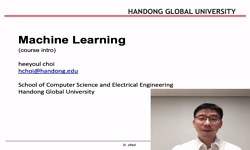The management of algal bloom is essential for the proper management of water supply systems and to maintain the safety of drinking water. Chlorophyll-a(Chl-a) is a commonly used indicator to represent the algal concentration. In recent years, advance...
http://chineseinput.net/에서 pinyin(병음)방식으로 중국어를 변환할 수 있습니다.
변환된 중국어를 복사하여 사용하시면 됩니다.
- 中文 을 입력하시려면 zhongwen을 입력하시고 space를누르시면됩니다.
- 北京 을 입력하시려면 beijing을 입력하시고 space를 누르시면 됩니다.

머신러닝 자동화 알고리즘을 이용한 수질예측 모형 구축 = Development of a model to predict water quality using an automated machine learning algorithm
한글로보기부가정보
다국어 초록 (Multilingual Abstract)
The management of algal bloom is essential for the proper management of water supply systems and to maintain the safety of drinking water. Chlorophyll-a(Chl-a) is a commonly used indicator to represent the algal concentration. In recent years, advanced machine learning models have been increasingly used to predict Chl-a in freshwater systems. Machine learning models show good performance in various fields, while the process of model development requires considerable labor and time by experts. Automated machine learning(auto ML) is an emerging field of machine learning study. Auto ML is used to develop machine learning models while minimizing the time and labor required in the model development process. This study developed an auto ML to predict Chl-a using auto sklearn, one of most widely used open source auto ML algorithms. The model performance was compared with other two popular ensemble machine learning models, random forest(RF) and XGBoost(XGB). The model performance was evaluated using three indices, root mean squared error, root mean squared error-observation standard deviation ratio(RSR) and Nash-Sutcliffe coefficient of efficiency. The RSR of auto ML, RF, and XGB were 0.659, 0.684 and 0.638, respectively. The results shows that auto ML outperforms RF, and XGB shows better prediction performance than auto ML, while the differences between model performances were not significant. Shapley value analysis, an explainable machine learning algorithm, was used to provide quantitative interpretation about the model prediction of auto ML developed in this study. The results of this study present the possible applicability of auto ML for the prediction of water quality.
1 박정수, "수질자료의 특성을 고려한 앙상블 머신러닝 모형 구축 및 설명가능한 인공지능을 이용한 모형결과 해석에 대한 연구" 대한상하수도학회 36 (36): 239-248, 2022
2 곽재원, "수문기상예측자료를 활용한 대청호 Chl-a 3개월 선행예측연구" 한국습지학회 23 (23): 144-153, 2021
3 NIER National Institute of Environmental Research, "realtime water information system"
4 Chen, T., "Xgboost: A scalable tree boosting system" Association for computing Machinery 2016
5 Xin, D., "Whither AutoML? Understanding the role of automation in machine learning workflows"
6 Liu, M., "Support vector machine an alternative to artificial neuron network for water quality forecasting in an agricultural nonpoint source polluted river?" 21 : 11036-11053, 2014
7 Pedregosa, F., "Scikit-learn: Machine learning in Python" 12 : 2825-2830, 2011
8 Breiman, L., "Random forests" 45 (45): 5-32, 2001
9 Shin, Y., "Prediction of chlorophyll-a concentrations in the Nakdong River using machine learning methods" 12 : 1822-, 2020
10 Song, Y. H., "Policy analysis and response strategy to improve water quality in Miho stream" 33-36, 2021
1 박정수, "수질자료의 특성을 고려한 앙상블 머신러닝 모형 구축 및 설명가능한 인공지능을 이용한 모형결과 해석에 대한 연구" 대한상하수도학회 36 (36): 239-248, 2022
2 곽재원, "수문기상예측자료를 활용한 대청호 Chl-a 3개월 선행예측연구" 한국습지학회 23 (23): 144-153, 2021
3 NIER National Institute of Environmental Research, "realtime water information system"
4 Chen, T., "Xgboost: A scalable tree boosting system" Association for computing Machinery 2016
5 Xin, D., "Whither AutoML? Understanding the role of automation in machine learning workflows"
6 Liu, M., "Support vector machine an alternative to artificial neuron network for water quality forecasting in an agricultural nonpoint source polluted river?" 21 : 11036-11053, 2014
7 Pedregosa, F., "Scikit-learn: Machine learning in Python" 12 : 2825-2830, 2011
8 Breiman, L., "Random forests" 45 (45): 5-32, 2001
9 Shin, Y., "Prediction of chlorophyll-a concentrations in the Nakdong River using machine learning methods" 12 : 1822-, 2020
10 Song, Y. H., "Policy analysis and response strategy to improve water quality in Miho stream" 33-36, 2021
11 Kwon, Y. S., "Monitoring coastal chlorophyll-a concentrations in coastal areas using machine learning models" 10 (10): 1020-, 2018
12 Hollister, J. W., "Modeling lake trophic state: A random forest approach" 7 : e01321-, 2016
13 Moriasi, D. N., "Model evaluation guidelines for systematic quantification of accuracy in watershed simulations" 50 : 885-900, 2007
14 Park, J., "Interpretation of ensemble learning to predict water quality using explainable artificial intelligence" 832 : 155070-, 2022
15 LeDell, E., "H2O AutoML: Scalable automatic machine learning" 2020
16 Friedman, J. H., "Greedy function approximation: a gradient boosting machine" 1189-1232, 2001
17 Dietterich, T. G., "Ensemble methods in machine learning" 1-15, 2000
18 Feurer, M., "Efficient and robust automated machine learning" 2962-2970, 2015
19 Lundberg, S. M., "Consistent individualized feature attribution for tree ensembles"
20 Bennett, N. D., "Characterising performance of environmental models" 40 : 1-20, 2013
21 Feurer, M., "Auto-sklearn 2.0: Hands-free automl via meta-learning"
22 Lundberg, S. M., "A unified approach to interpreting model predictions" 4768-4777, 2017
23 Confalonieri, R., "A historical perspective of explainable Artificial Intelligence" 11 (11): e1391-, 2021
동일학술지(권/호) 다른 논문
-
- 대한상하수도학회
- 이호민
- 2022
- KCI등재
-
음폐수의 혐기성 소화 효율 향상을 위한 열가수분해 하수슬러지와 병합처리성 검토
- 대한상하수도학회
- 허준
- 2022
- KCI등재
-
- 대한상하수도학회
- 오현제
- 2022
- KCI등재
-
- 대한상하수도학회
- 이채영
- 2022
- KCI등재




 ScienceON
ScienceON 코리아스칼라
코리아스칼라








